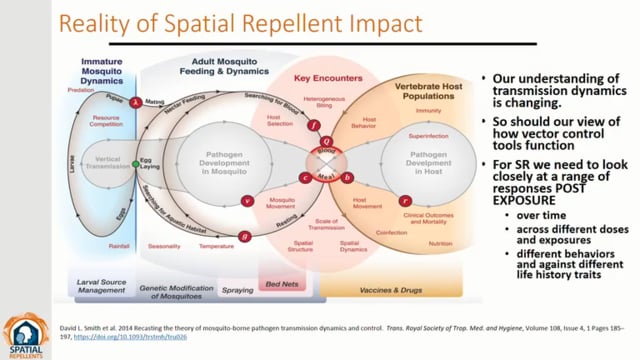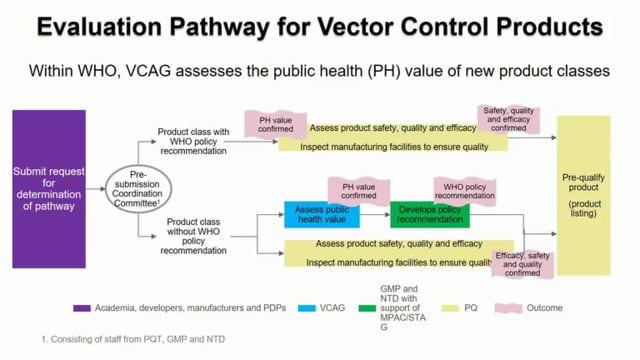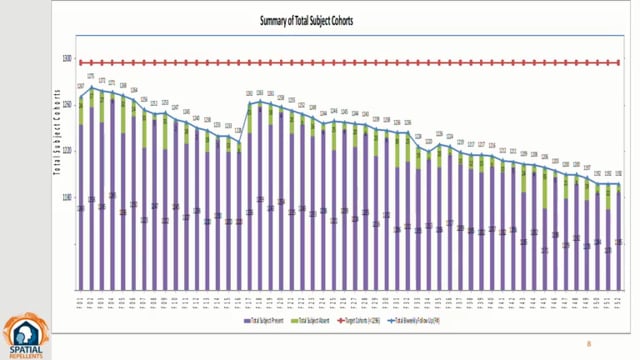ASTMH 2018: Session 157 “Advancing a Spatial Repellent Category for Public Health Use: New Insights, Considerations and Remaining Challenges”
Published: 18/12/2018
THEMES: THEMES: Health Systems | Vector Control
MESA Correspondents bring you cutting-edge coverage from the 67th ASTMH Annual Meeting
Session 157: “Advancing a Spatial Repellent Category for Public Health Use: New Insights, Considerations and Remaining Challenges”
Spatial repellents are products that can repel mosquito movement into a home and inhibit mosquito behaviours such as host-seeking through the release of volatile chemicals into a treated space. In contrast to residual insecticide sprays, spatial repellents do not need mosquitoes to rest on a chemically treated surface since they elicit mosquito responses to chemicals in the vapour phase.
This session gave an overview of the current evidence of efficacy from laboratory and field studies, and the assessment processes for endorsing a spatial repellent product category for public health use.
John P. Grieco presented some laboratory evaluations of post-exposure effects of spatial repellents on mosquito behaviour. He highlighted the need to go beyond the initial single-point contact of the mosquito with the repellent, and take into account the impact of multiple exposures over time on mosquito behaviours, egg production, oviposition and other life history traits. He also advocated for a broader vision with regard to how spatial repellents complement or interfere with existing tools such as light traps, push-pull strategies or oviposition traps. Finally, he highlighted the challenges in evaluating these tools and moving these kinds of experiments from the laboratory to the field.
Thomas Scott gave an overview of WHO criteria and other points that should be considered when assessing the public health value of spatial repellents, as these innovative tools are among the 18 vector control products that are currently being reviewed by WHO in two ongoing phase III clinical trials in dengue and malaria. He highlighted the importance of the evidence emerging from these epidemiological trials to inform the evidence-based approach to planning and implementation of a sustainable global vector-control response strategy.
Amy Morrison presented the recent evidence emerging from an ongoing randomized-controlled trial which aims to assess the efficacy and acceptability of spatial repellents against arbovirus infections in north-eastern Peru. After placing transflutrin-treated shields in the houses, two measures of transmission are being collected in a cohort of approximately 2200 people. At the same time, continuous entomological monitoring is being conducted to collect pupae, larvae and adult mosquitoes. Preliminary results suggest lower bite rates and mosquito densities after deployment of the shields, and good acceptability rates from the community.
Din Syafruddin reviewed recent evidence from a randomized controlled trial in Indonesia which aimed to evaluate the public health impact of one spatial repellent product to reduce and prevent transmission of Plasmodium spp. and dengue viruses. Following placement of transflutrin-treated and placebo-treated shields in intervention and control houses respectively, mosquitoes are being collected, baseline malaria incidence measured, adverse events reported and insecticide resistance patterns monitored along the trial period. Preliminary results suggest a positive impact of the spatial repellents.
Suzanne Van Hulle discussed the challenges and opportunities of the operational implementation of spatial repellent products in the context of humanitarian emergencies. Spatial repellents could be suitable in all the different types of shelter deployed in this context, but some considerations should be evaluated prior to implementation. Some of the challenges highlighted were the optimal time for deployment, the cultural acceptance and perception, and the optimal delivery mechanism.
Chair and Co-Chair: Nicole L. Achee (University of Notre Dame, United States) and John P. Grieco (University of Notre Dame, United States)
This report was written by Maria Tusell with editorial support from Professor Graham Brown.
Published: 18/12/2018
THEMES: Health Systems | Vector Control


